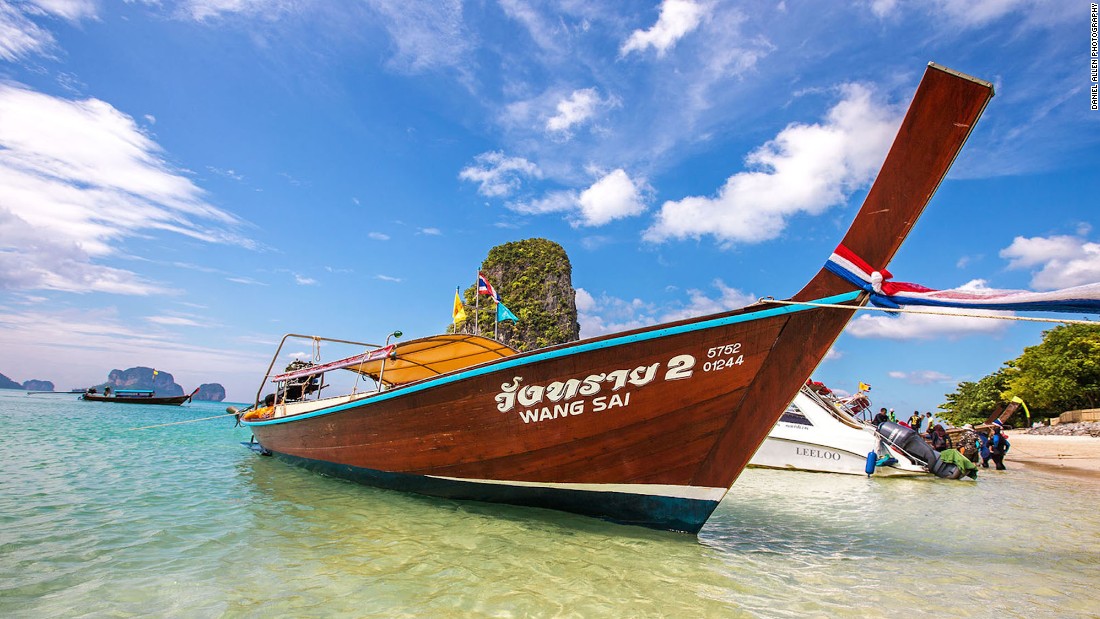
Today there’s hardly a postcard of southern Thailand’s Andaman coast that doesn’t feature a long-tail boat — or “rua hang yao” in Thai.
They’re seen either moored on some idyllic beach of powdery sand, or powering through the turquoise sea with a foaming arc of water thrown up behind.
Somewhat grandiosely known as “the gondolas of the south” by many Thais, these classic vessels come in various shapes and sizes, but are united by one common feature.
They all have a propeller attached to the end of a long pole.
Caves and passageways
Today long-tail boats can be found on numerous Thai waterways, from the floating markets and canals of Bangkok to the estuaries and deltas of the Gulf of Thailand.
Yet the majority work in and around the resorts of Krabi and Phuket on the Andaman coast, where they play a major role ferrying tourists and supplies, as well as carrying local fishermen to their daily fishing grounds.
With their narrow profile and negligible draft, long-tail boats are ideal for navigating the shallow bays, creeks, caves and passageways of Krabi’s picturesque marine environment.
Chances are, anyone visiting the Andaman coast will ride one of these distinctive craft.
As reported by CNN
